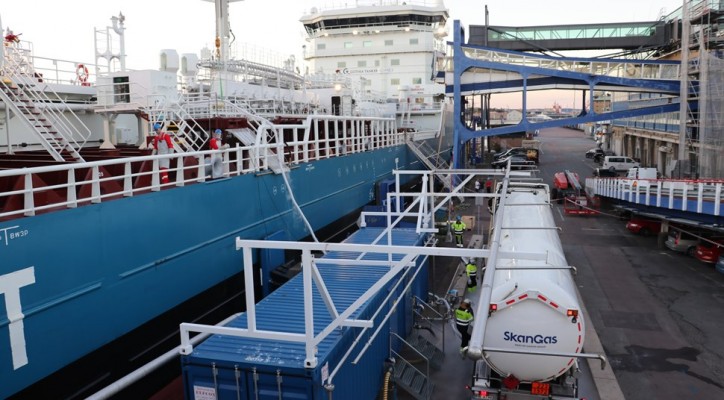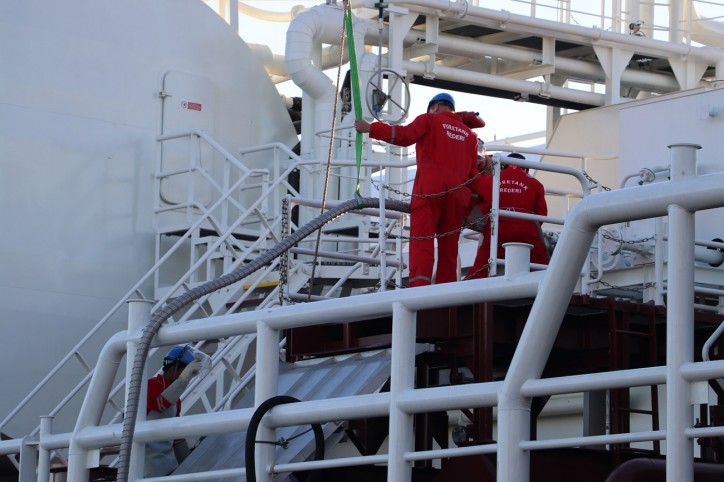Monday, June 25, the first-ever bunkering of liquefied biogas (LBG) took place at the Port of Gothenburg. Fure Vinga, owned by the Donsö-based shipping company Furetank, took on 40 cubic metres of LBG directly from a road tanker parked at the quayside. The bunkering took place at the Stena Line methanol bunkering facility at the Majnabbe Harbour, and passed without incident.

“It was a successful operation that demonstrates that we are fully prepared, with routines and operating instructions for bunkering and for operating our LNG vessels using LBG. We have now run the engines and it is simply a case of noting that everything works just as well using LBG as it does using LNG,” said Lars Höglund, Furetank chief executive, following the vessel’s departure from the Majnabbe Harbour on Tuesday morning.
Normally, Fure Vinga runs on liquefied natural gas (LNG), which has become an increasingly common fuel among vessels calling at the Port of Gothenburg in recent years. In 2016, there were 26 LNG calls at the Port of Gothenburg. In 2017, the figure had risen to 111, and the upward trend is set to continue during 2018.
The content of LNG and LBG is essentially the same – they both comprise almost 100 per cent methane. What sets the fuels apart is the production process. LNG is extracted from the ground, whilst LBG is a fossil-free, renewable fuel, produced from organic waste.
The almost identical chemical composition of the two fuels means that engines that run on LNG can also run on LBG. Consequently, the infrastructure which is currently being built for LNG can also be used for LBG. The transition to LBG does not require any extra investment in new vessels for the shipping companies that are already using LNG, or in a new pipeline infrastructure for the companies that are currently supplying LNG.

“The LBG that was bunkered on Monday came from the biogas facility in Lidköping, owned by Skangas’s parent company Gasum. Skangas already supplies vessels at the Port of Gothenburg with LNG. However, the volume of LBG that is currently being produced is still not sufficient to satisfy the needs of the shipping sector,” said Lars Höglund.
“We would have liked to have pumped more LBG into our tanks, but unfortunately supply is limited. I know there is a considerable demand from the market, both from us and other players in the shipping sector. I now hope that suppliers will make an even greater effort to open the eyes of the shipping community to the potential of LBG,” Lars Höglund concluded.
Fact file: LBG
Liquefied biogas (LBG) is a renewable fuel produced by processing various types of organic waste. Normally, the waste is processed by bacteria breaking down material containing carbon in an oxygen-free environment. During the process, the gas is purified and upgraded to approximately 97 per cent methane. The biogas is then condensed and liquefied by cooling it down to a temperature of minus 150–170°C.
Fact file: Fure Vinga
- Type of vessel: Chemical tanker
- Length: 149.9 m
- Width: 22.8 m
- Draught: 12.1 m
- Deadweight: 16,300 tonnes
- Load capacity: 19,900 cbm
Source: Port of Gothenburg